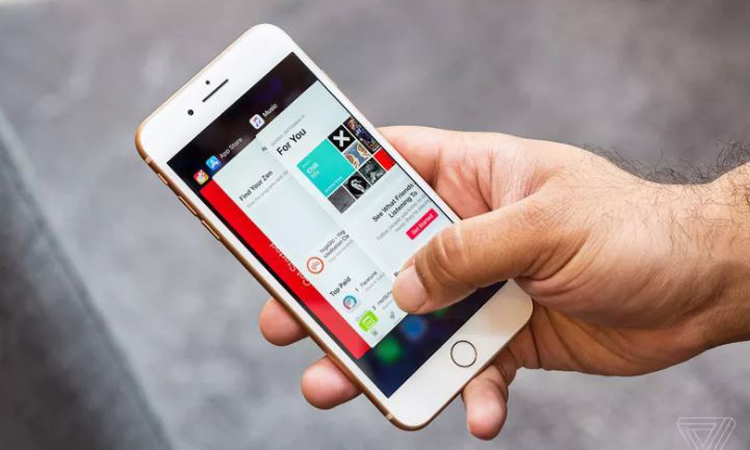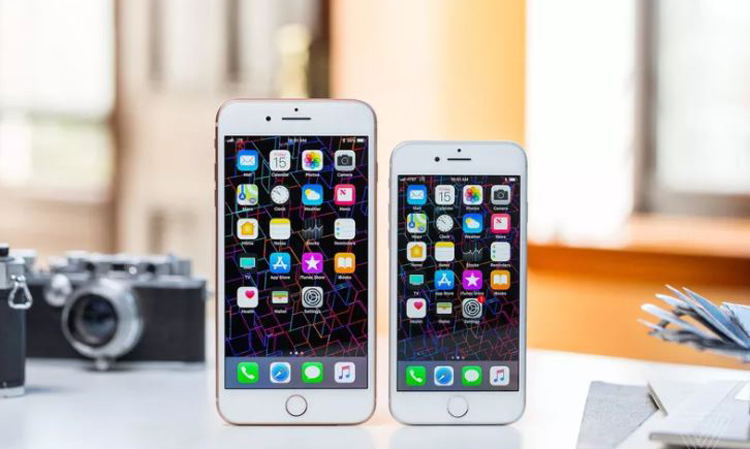Remember Apple’s New iPhone 8?
What if the iPhone 8 is better than the iPhone X?
There is a bit of a feeling drifitng around that no-one really cares about the iPhone 8 and 8 Plus. In fact it was reported last week, that Apple’s latest iPhones are actually being outsold by their predecessors, the iPhone 7 and 7 Plus.
This isn’t really surprising either…
People that buy iPhones in September are early adopters. Early adopters are likely to wait for the iPhone X. The iPhone 8 isn’t a transformative upgrade over the 7, and the 7 now costs $100 less than it did before. Simple enough.
However, some people will have gone out there and bought the iPhone 8, and not because of the price, maybe because they think the handset is actually better, and here is why:
DISPLAY
This is the big one, quite literally. A lot of people assume the X will be an unambiguous slam dunk in this regard, saying the device has a bigger screen than the iPhone 8 Plus in a body close to the size of the regular iPhone 8.
But this isn’t really true, and a lot of people used to the Plus-sized iPhones will be disappointed with the X in practice.
Yes, the iPhone X has a 5.8″ screen compared to the iPhone 8 Plus’ 5.5″ display. It’s also true that the X’s is higher resolution. But the 8 Plus’ screen is actually bigger.
The X uses a narrower aspect ratio, so while it’s longer on the diagonal, you still get more surface area on the Plus overall — and that’s before you account for the notch and the rounded corners.
Comparing screen sizes isn’t what it used to be. But the bottom line is that the Plus will display more useful content at once, even with its lower resolution.
It’s wider as you hold it in portrait, which is why Apple introduced a new size class for app layouts when the iPhone 6 Plus first came out. Apps, websites, and so on have 414 horizontal “points” — the unit of measurement that the screen is divided into for design purposes — to fill on the Plus, while the X has 375, the same as the regular iPhone 8.
The X has more vertical points, of course, because of the taller screen, but a lot of that will be occupied by the notch and home button bar. What this means is that apps on the X will use the same basic layouts as the iPhone 8, not the Plus.
You’ll get more vertical content in portrait mode, but in landscape mode you’ll actually see less vertical screen space than even the smaller 8 because of how developers need to avoid the virtual home button bar as well as the notch.
You won’t get the Plus’ iPad-style multi-panel views, either. And how long will it take before all your apps get updated for the X in the first place? I’m still using several that never got updated for the iPhone 6.
The X’s screen may well be better quality – we’ll have to see how Apple’s first attempt at an OLED phone turns out, but there is high hopes for the panel itself.
Obviously, there’s also no denying that the X makes far better use of available space; the iPhone 8 Plus’ chunky bezels are pretty anachronistic for a phone at this price in 2017.
But some people are too used to the Plus layouts, and the accompanying information density, to go back to what’s often going to feel like a smaller phone in actual use.
Video is also a concern with the X. When watching regular 16:9 content, the notch and aspect ratio mean that you’re either going to have a lot of wasted space, or things are going to look weird. (Granted, the X will possibly be better for viewing wider cinematic content, in case you do feel like watching Lawrence of Arabia on the bus.)
As with TVs, it turns out that a big 1080p 16:9 rectangle is the best and most reliable way to show the majority of video content out there.
TOUCH ID
We expect Face ID to work very well on the X. It’s doubtful that Apple would launch it otherwise, considering the inevitable backlash that would follow — the company doesn’t want a repeat of the Apple Maps fiasco, where it removed a critical feature of the iPhone and replaced it with something much worse.
But that doesn’t mean we particularly want to use Face ID.
There could be some technical issues to iron out at launch, and even if there aren’t, it’s just another thing to figure out and get used to without any immediate advantages. (Not sure Animoji counts.) Apple itself fell foul of this when it announced Face ID, as Craig Federighi couldn’t log into his demo unit on stage after the authentication had been reset.
The system was working as intended, but that’s kind of the point — if it’s able to trip up even Apple’s tightly managed press events, it’s going to take a minute for regular users to learn what to expect.
Meanwhile, Touch ID works on the iPhone 8 Plus the same way it always has. It’s fast, reliable, and you know what you’re doing when you activate it.

DESIGN
So Apple saying the iPhone 8 has a ‘new design’ stretches the boundaries of belief as much as it did when Apple said the same thing about the iPhone 7.
This is still very much a tweaked iPhone 6. But what matters is what you think of the tweaks.
The glass back feels great, and while Apple is very late to wireless charging, we are glad it’s here now. The new ‘gold’ colorway, which is more like copper on the sides and cream on the back, feels like something a ’70s Bond villain would use – which is great.
The grey and white versions, too, look appealingly minimalist in a way that the 6 never did. To be clear, the iPhone X is the more attractive and beguiling device. Even the knockoff models that were found at a tech market in Shenzhen last month, looked great!
But the 8 makes a statement of its own, giant bezels and all. That statement is “I’m comfortable with what most phones are like today, and I want the ultimate one of those.”
PRICE
Let’s be honest this isn’t the biggest issue in the world as so many people split phone costs over 24 months, so the X would be less than $10 a month extra. But that adds up, of course — $200 is $200, even if you aren’t paying upfront. And if you are, you’d have to really want the X.
AVAILABILITY
Even if you’ve read all of the above and still want an iPhone X, good luck actually getting one. Supply chain reports suggest that Apple is only able to produce the device in alarmingly low quantities, meaning that you could be waiting for several months before you’re able to pick one up. If you use a phone for several years, that’s less of an issue.
But if you buy a phone every year or two? Waiting is going to take a serious chunk out of the amount of time you’ll spend with this one. You can walk into an Apple store right now and buy a phone with the same software, processor, primary camera, and wireless charging support, along with a more useful screen, more familiar method of biometric authentication, and way hotter color scheme, for hundreds of dollars less than the X.

There is the whole idea of desire to have the cool new thing — a lot of us fall victim to this. But when you lay it out like this in your head, you may surprise yourself by finding it really hard to justify the X.
Your needs and desires may differ, and that’s totally fine. If you’re sure your next smartphone has to be an iPhone, some advice is to just consider the 8 Plus as the X preorder frenzy begins this week – it’s not exciting, but it might be better for you.
When you buy an iPhone X, you’re buying into Apple’s vision for the future of the smartphone. When you buy an iPhone 8, you’re buying the best version of the present. The former is more exciting, but if you need a new phone today, the latter may prove to be more pragmatic. Like Nilay said: it’s an iPhone.
Next year’s iPhone X-2 Plus, though? Count me in.


Comments are closed, but trackbacks and pingbacks are open.